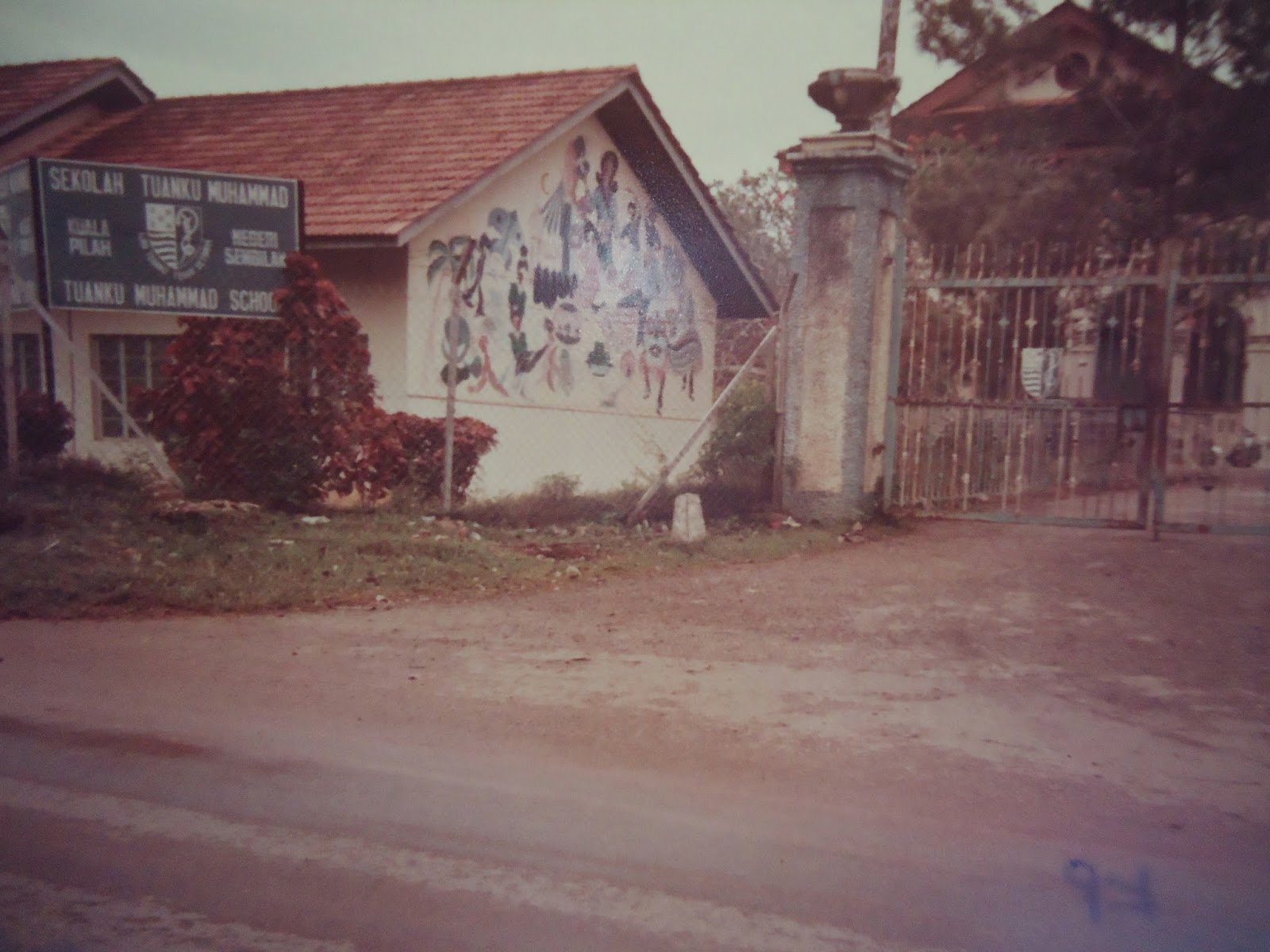THE TUANKU MUHAMMAD SCHOOL CENTENARY SERIES 1
Tuanku Muhammad School Kuala Pilah in 2012
The premier School of Kuala Pilah Tuanku Muhammad School (TMS to KP -Philes) steeped in history and one of the premier schools in the country turns 100 years this year (2014). It was reportedly founded in 1914- according to an article in the TMS school magazine on the 60th year of the TMS . Prior to that the TMS called by other names was situated in different parts of the town (Kuala Pilah Village then). But even before that and very likely before 1900 there was a vernacular school near the Lister Memorial on Lister road then called Main street which itself was once Cart Road. This recorded on a marble plaque on the rear wall of the Memorial (picture above) There is no mention if the Vernacular school was a Malay, Chinese or Tamil School but more than likely it was not an English school.
I quote from the TMS Annual 1974,
Towkay Tung Yen began a Committee School under his leadership and in 1908 there were twenty eight pupils with a Mr. De Witt as Headmaster and Mr Eng Keng as his assistant. The School was abandoned due to financial troubles.
The Government School, the true forerunner of TMS Began in March 1914 with Mr J W Moore as Headmaster........
It is not known where the original TMS was but 4 years after it began Mr Moore left in 1918 and the school moved to the Sekolah Kebangsaan opposite the KP Stadium of today with Mr Nonis as Headmaster and Mr P K Raman as his assistant. The school progressed well .....The teachers wore white drill military style tunics and the puils wore their national dress and Chinese boys had their hair done in queues.... By 1924 the school's steady growth had the enrolmentraised above the 200 mark and there were 6 teachers. A few pupils were prepared for the Junior Cambridge Examination.
By 1929 the enrolment was331 and the school had outgrown a building originally designed to accomodate 100 pupils.The site of the present school was chosen by Mr Gordon Hall and the building with room for 500 pupils was completed in 1930 at a cost of $105,995.The School was occupied in 1031 under the Headmaster Mr Redfern and Miss Lomas the Primary supervisor with an enrolment of 327 pupils including 59 girls. The school was renamed Government English School Kuala Pilah until after the death of His Late HighnessTuanku Muhammad , after whom the the school was then named as a token of esteem and gratitude in 1933. Out -of -school activities includedSxcout Troop. Sports, drama and an orchestra. The Present Malay Girls' School which was then the Scout Headquraters was turned into a hostel for 26 Boarders.
With the Japanese Occupation (see The War years under the Kuala Pilah History Series in same blog) the school ceased functioning , its furniture and fittings were stripped and looted, stocks of textbooks and library books stolen or burnt. It accomodated the Japanese Military Police who turned the playing field into a tapioca garden .When on September 7th 1945 TMS officially reopened with Mr Francis as Headmaster fear or eveil spirits deterred many boys from living in the hostel because many victims of the Japanese atrocitieswere buried in the estate behind the hostel.
The post war demand for English Education raised the enrolment to 760 in 1948 and the primary section had to be housed temporarily in a club building near the old District Office
The new Police Station 1951 (above) -that replaced older wooden buildings in town, near the old post office and then opposite to present one across the other side of the padang- with the old post war TMS Primary school, near the District Office and Padang ( below). The Old TMS temporary Primary school was where I started schooling in TMS in 1949 , Index No. 1170. My first teacher was Mrs Paul Asirvatham .Miss Lomas was my Primary II teacher with Mr William Jesudason by then we had moved to the TMS school along Tampin Road and our class rooms were new wooden buildings with thatched attap roofs. These were later changed to Asbestos roofs !
More on the history of TMS to follow !










































